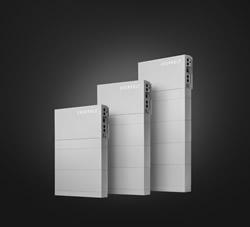Wind turbines can have negative impacts on ecosystems present in the air and underwater. The U.S. Department of Energy (DOE) has been researching solutions with the help of the National Renewable Energy Laboratory (NREL).
Next Generation of Wind Turbines
Dr. Raj Shah and Mr. Muqsit Khan | Koehler Instrument Company
Introduction
Renewable energy is beneficial to the environment and will become a necessity in the energy industry. Currently, popular energy sources are derived from nonrenewable sources like coal. Not only is the amount of energy obtained finite, but pollutants are formed as a result. Pollutants such as carbon dioxide (CO2) are the leading cause of global warming [1]. It is imperative for the sake of the environment to increase usage of renewable energy. Renewable energy is sourced from natural resources that can be replenished. They do not cause the same level of environmental damage as nonrenewable energy. Common examples are sun, wind, and thermal energy. Renewable energy needs a global implementation to reduce climate change. Renewable energy can save the environment, but it is difficult to replace nonrenewable energy. Challenges like cost, infrastructure, storage, and politics impede the global adoption of renewable energy. The focus of this paper is the development of wind energy as a renewable energy source.
Wind energy is sourced from wind turbines that generate electricity. Wind turbines rely on the natural wind to turn their propeller blades around a rotor. The imbalance of air pressure on the blades causes the rotor to spin. This creates mechanical power which is translated into electricity by using a generator [2]. Wind is the renewable source necessary to create energy. Wind energy can be seen as an offspring of solar energy. Wind is dependent on the Earth’s rotation, unequal heating of the atmosphere, and inconsistencies of the Earth’s surface. Since wind is dependent mostly on irregularities, wind flow and patterns are inconsistent and differ from location to location [2]. Wind turbines need to be efficient to take full advantage of the resources provided. Wind turbines are a useful tool for renewable energy but come with a couple of flaws. They are expensive to design and create as well as maintain. Durability needs to be also optimized especially in harsh climates. These factors need to be developed and optimized to make wind turbines more reliable and efficient. Climate change is a serious issue that requires immediate action. Wind energy as a renewable energy source has the potential to considerably reduce climate change.
Current Wind Turbine Technology
Wind turbine design is a crucial factor in determining wind turbine effectiveness. The most common design is shown in Figure 1. They are called horizontal-axis turbines and have the blades facing into the wind. Vertical-axis turbines are shaped differently and do not depend on the direction of the wind, as shown in Figure 2. Wind turbines are not exclusively built on land. Offshore turbines exist on large bodies of water and generate large amounts of energy. Wind tends to be stronger and faster over water, which allows for substantial generation. Land turbines are built on fields and mountain tops. On larger farms they are grouped together to create great amounts of energy [2]. Onshore wind turbines create about 2-3 megawatts (MW) of energy while offshore turbines create about 12 MW of energy [3]. Offshore turbines are much larger and are present near stronger winds, allowing them to create more energy. Similarly, offshore wind turbines can be grouped together to create hundreds of MW. However, larger wind turbines result in higher costs. Additionally, the harsh weather conditions offshore can make maintenance expensive [4]. Offshore turbines are located farther making transportation and maintenance more difficult. Overall, offshore turbines create more energy, but have greater costs and downtime.
.png)
.png)
Wind turbines regardless of their design suffer universal flaws. One of the greatest issues present in wind turbine is environmental impact. Wind energy does not harm the environment in the same fashion as nonrenewable sources. Wind turbines take up large amounts of spaces which can disturb local ecosystems. Additionally, wind turbines threaten flying animals and pose a risk. Furthermore, offshore turbines introduce the potential risk to marine life [5]. Wind turbines aren’t efficient enough to make wind energy the dominant renewable energy source. Wind turbines also have difficulty reaching maximum capacity because of inconsistent wind patterns. These hinderances should not deter the global use of wind energy. Researchers have been cooperating with governments and industries to solve the current issues. New technologies are constantly being discovered and researched. Wind turbines have been changing in design and efficiency to make them a stronger contender as an alternative energy source.
Developments in Wind Turbine
Over the past year, many developments have happened improving wind turbines. These developments are made to solve the inherent problems that are associated with wind turbines. Wind turbines can have negative impacts on ecosystems present in the air and underwater. The U.S. Department of Energy (DOE) has been researching solutions with the help of the National Renewable Energy Laboratory (NREL). Birds and bats are common animals found near wind turbines. The solution of this issue is to implement a deterrent into the turbine design. NREL has several projects that can deter animals away from wind turbines. An example is mounting special ultraviolet lights on the blades that act as a deterrent. Ultrasonic deterrents are also implemented for bats that approach the wind farms [5]. Offshore turbines can negatively affect aquatic ecosystems. The noise and vibrations disturb close by marine wildlife. NREL is working with Synthesis of Environmental Effect Research (SEER) to find possible solutions. SEER focuses on studying wildlife and find mitigation strategies, such as reductions in noise and vibrations [5]. Wind turbines are a source of renewable energy, and the purpose of renewable energy is to reduce harm to the environment. The development of wind turbines that minimize adverse effects on local wildlife is essential for their viability as an alternative energy source.
An overlooked issue of wind turbines is radar interference. The increase of wind farms has made this issue more significant. Trelleborg with the help of Loughborough University’s Materials Department has designed Full Radar Absorbing Materials and Equipment (Frame®). Frame® is a material capable of diminishing radar interference caused by wind turbines and can be seen in Figure 3 [6]. Frame® is integrated through blade resins and fiberglass systems. The materials consist of nano-composite polymer solution with a design that is lightweight and inexpensive. The frequency absorption is tuned at a range of 1-12 GHz making it multi-band [7]. Trelleborg solved the radar interference issue with a method that is efficient and far from complex.
.jpg)
Wind turbines are expensive and can be difficult to transport. Efforts have been made to reduce size and overall cost. NREL has researchers developing blades that are recyclable and cheap. Cutting costs is crucial for wind turbines because of their already high price. The blades are made of materials, such as fiberglass, balsa wood, and epoxy thermoset resin. Additionally, the materials are bound with a thermoplastic resin. This resin is solid at room temperature and can be liquified through heat. This allows the components to be recycled and reused for new blades [8]. The resin is called Elium and NREL developed it with the help of Arkema Inc. According to a research engineer who worked on the blades, stress tests were conducted showing these blades create reduced vibrations. The NREL has made significant improvements to wind turbines in the past year.
Wind turbine production and transportation is expensive, but maintenance can be costly as well. A common failure in wind turbines is pitch bearing failure. Pitch bearings are components that rotor to the blades. Pitch bearings are vital for working wind turbines and failure can ruin the entire blade. ONYX Insight is a software and engineering company that has created a possible solution. They invented a monitoring system known as ecoPITCH that can predict pitch bearing failure. Failures include wear, fatigue, poor induction, and quality issues. It relies on data analytics and sensor hardware to recognize early warning signs of failure and reports them to the central hub [9]. Advancements like this can help reduce maintenance costs and prevent catastrophic loss.
Design choices are an important aspect of development. When better components are utilized, the overall product becomes more reliable. American Wind Inc. is a company that has been researching and developing new wind turbine technology. The wind turbine they developed is distinctive and is called Advanced WindWall® 100 (AWW). This system is innovative because it covers a large area but has the high efficiency of a small turbine. This was designed by creating a new generator that allows the combination of multiple small generators [10]. The system consists of multiple small turbines that use ducted wind turbines, and a model is shown in Figure 4. Material choice also plays an important role. A non-corrosive, non-gassing, and non-static material known as AT2LAS is used. According to Oak Ridge National Labs, it can last a century and is more than less than half the weight of aircraft grade aluminum [10]. American Wind Inc. is bringing an innovative and revolutionary change in wind turbine development. Wind turbine development has been remarkable over the past year. New ideas and innovative design choices strengthen the viability of wind energy. Renewable energy will need to overtake nonrenewable energy, and wind energy development plays an essential role.
.jpg)
Conclusion
Wind turbines have advanced quite well in the past couple of years. However, there is still more room for improvement. Researchers must continue to make wind energy more reliable and cost effective. Environmental friendliness, cost, disposability, efficiency, and design choice are key areas that continue to advance. Reducing noise and sensing nearby animals can prevent damage to sensitive ecosystems. Radar interference and part failure can be avoided with design upgrades. Wind turbines are difficult to dispose of and recyclability is being explored. Companies like Trelleborg and American Wind Inc. have designed significant upgrades to modern wind turbines. Wind turbines can come in many different designs like offshore, onshore, horizontal axis, and vertical axis. Researchers need to optimize and use unique designs to their advantage.
Wind energy has a bright future ahead. Wind turbines are in development and being engineered with unique qualities that grant significant advantages. Bladeless turbines and airborne turbines are in consideration but have not been fully tested for commercial use. These turbines would be strictly used offshore and are less harmful to local ecosystems [11]. Challenges in wind energy also lie ahead and they are expected to be addressed and solved. Future research is expected to solve issues revolving around wind patterns. Wind patterns are inconsistent making strong winds difficult to predict. Research on durability needs to be conducted and should be prioritized. Another important and challenging aspect is product life. Wind turbines need to work for a minimum of 20 years [12]. These new advancements may work but their lifespan needs to be evaluated. Wind turbines are on the right track to become the dominant renewable energy source in the U.S due to cost reductions [11]. It is probable that with new research and updates, the cost of wind turbines will continue to decrease. Wind energy is a growing market, and its renewability helps reduce climate change. Improvements over the next several years are imminent and will push the viability of wind energy.
 About Dr. Raj Shah
About Dr. Raj Shah
Dr. Raj Shah is a Director at Koehler Instrument Company in New York, where he has worked for the last 25 years. He is an elected Fellow by his peers at NLGI, STLE, and the Energy Institute.
A Ph.D in Chemical Engineering from The Penn State University
( https://www.che.psu.edu/news-archive/2018/alumni-spotlight-raj-shah.aspx)
and a Fellow from The Chartered Management Institute, London, Raj just became one of the first folks in the USA to be qualified as a Chartered Petroleum Engineer with the Energy Institute. An adjunct professor at the Dept. of Material Science and Chemical Engineering at State University of New York, Stony Brook, Raj has over 430 publications and has been active in the alternative energy industry for 3 decades.
More information on Raj can be found at https://www.nlgi.org/nlgi-veteran-member-raj-shah-presented-with-numerous-honors-in-2020/

Mr. Muqsit Khan is a student of Chemical engineering at SUNY, Stony Brook University, where Dr. Shah is the chairman on the external advisory board of directors, and Blerim is currently part of the thriving internship program at Koehler Instrument Company, in Long Island, NY.
References
[1] “Why Renewable Energy.” CRS, 13 Apr. 2018, resource-solutions.org/why-renewable
energy/.
[2] “How Do Wind Turbines Work?” Energy.gov,
www.energy.gov/eere/wind/how-do-wind-turbines-work.
[3] August, Keith Taryani. “Wind Turbine Cost: Worth the Million-Dollar Price in 2021?”
Weather Guard Lightning Tech, 22 July 2021, weatherguardwind.com/how-much-does-
wind-turbine-cost-worth-it/.
[4] LuvSide. “Onshore and Offshore Wind Energy: A Comparison: The Windy Blog.” LuvSide,
26 May 2020, www.luvside.de/en/onshore-offshore-wind-energy-comparison/.
[5] “Wind Energy and Wildlife Share Future in the Skies and Seas.” NREL.gov, 19 Oct. 2020,
www.nrel.gov/news/program/2020/wind-energy-wildlife-share-future.html.
[6] WPED Contributor. “The Latest Developments in Wind Turbine Technology to Facilitate
Radar and Windfarm Coexistence.” Windpower Engineering & Development, 16 Feb. 2021, www.windpowerengineering.com/the-latest-developments-in-wind-turbine-technology-to-facilitate-radar-and-windfarm-coexistence/.
[7] “Frame®.” Trelleborg, 2021,
www.trelleborg.com/en/applied-technologies/products-and-solutions/radar-mitigation/frame.
[8] Fialka, John. “New Wind Turbine Blades Could Be Recycled Instead of Landfilled.”
Scientific American, Scientific American, 27 Nov. 2020, www.scientificamerican.com/article/new-wind-turbine-blades-could-be-recycled-instead-of-landfilled/.
[9] WPED Staff. “New Hardware from Onyx Insight Predicts Pitch Bearing Failures before They
Happen.” Windpower Engineering & Development, 13 Sept. 2021, www.windpowerengineering.com/new-hardware-from-onyx-insight-predicts-pitch-bearing-failures-before-they-happen/.
[10] Sustainable Planet. “Developing an Innovative and Future Facing Wind Turbine System.”
Innovation News Network, 2 July 2021, www.innovationnewsnetwork.com/developing-innovative-future-facing-wind-turbine-system/12990/.
[11] “What Is the Future of Wind Energy?” Caltech Science Exchange,
scienceexchange.caltech.edu/topics/sustainability/wind-energy-advantages-disadvantages.
[12] “Useful Life.” NREL.gov, www.nrel.gov/analysis/tech-footprint.html.
The content & opinions in this article are the author’s and do not necessarily represent the views of AltEnergyMag
Comments (1)
Featured Product

